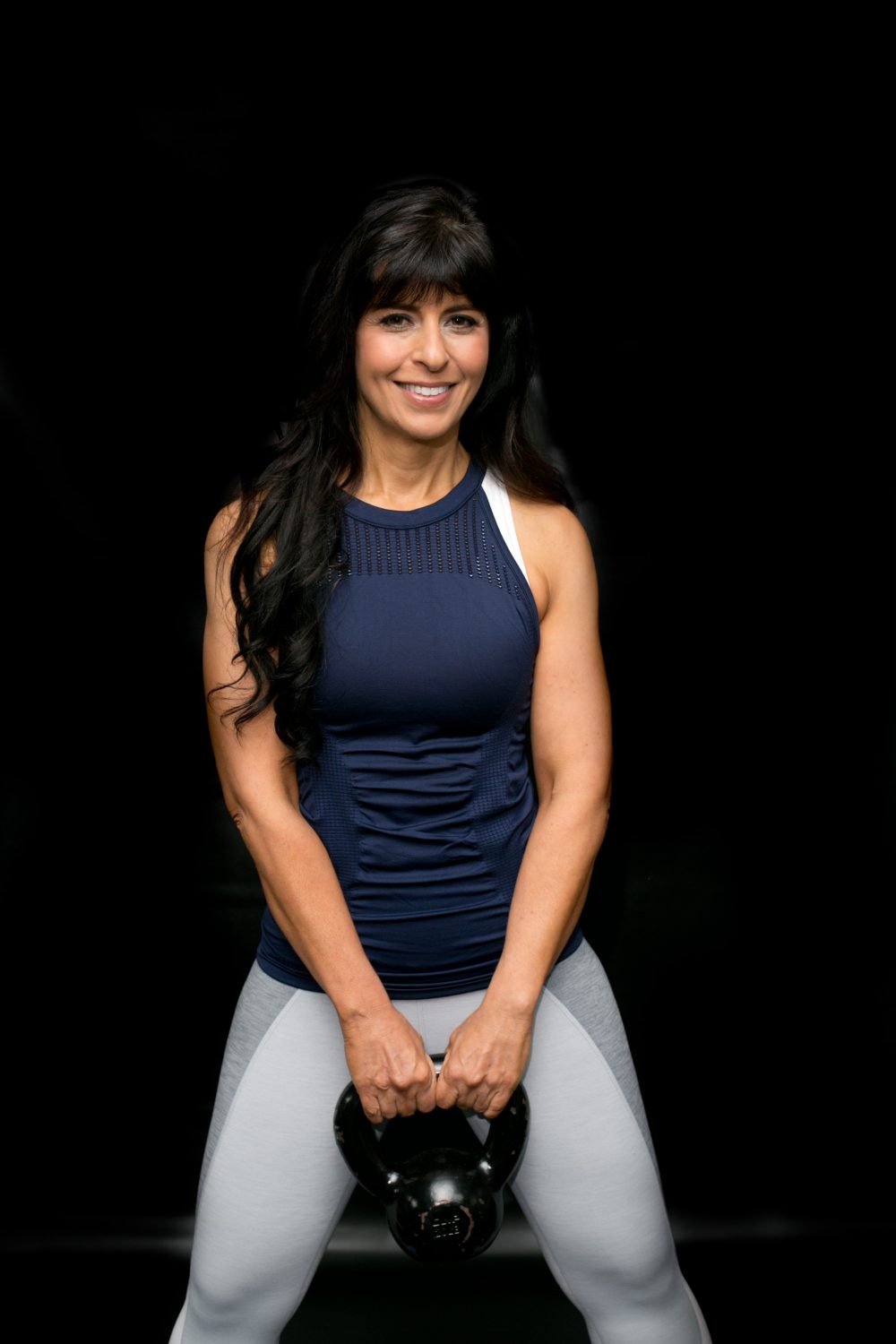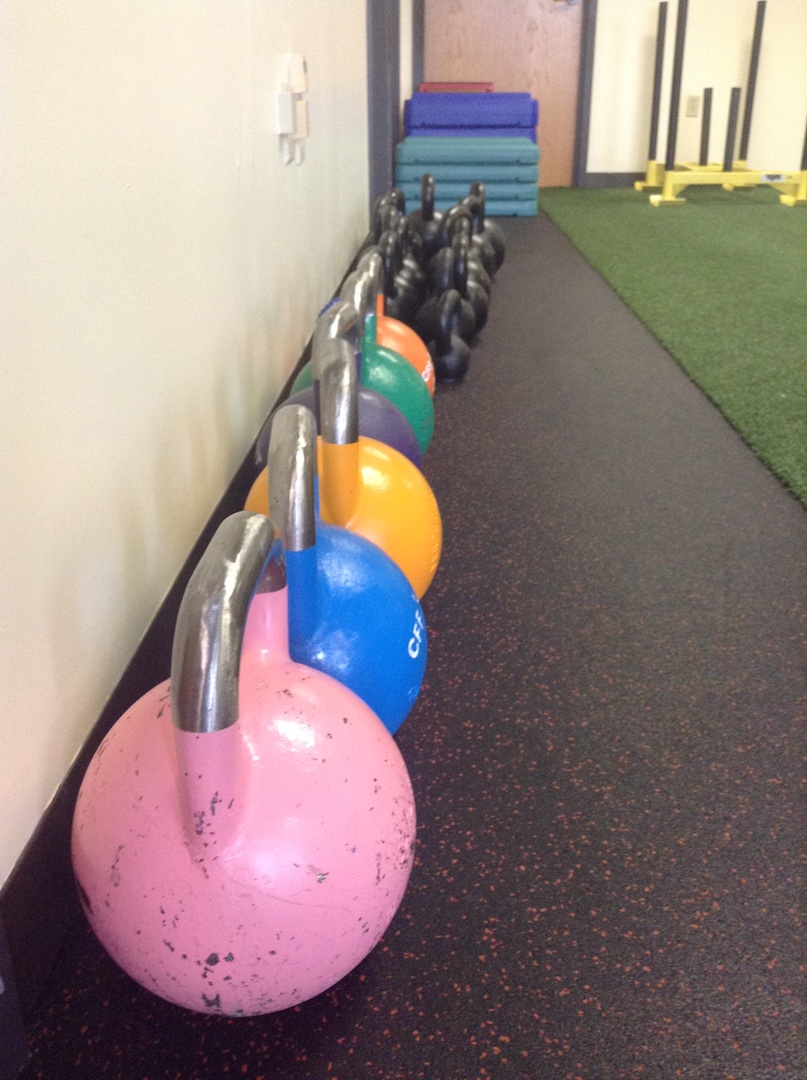Perhaps you’ve seen kettlebells lined up at your gym. With their unique shape and bright colors, it’s easy to understand how they can peak your curiosity. These bright colored, cannonball looking weights with a handle are intriguing, but to most they remain a bit of a mystery. Perhaps, you’ve walked by them and wondered how to use them or how they differ from dumbbells or barbells.

“Kettlebells can be intimidating!” Explains Julian Cardoos NS, CPT, RKC and owner and lifestyle coach at Rebirth Body Transformation Center in Wakefield, Massachusetts. “If you watch someone that is an expert, and you see him or her swinging this big ball around, it can surely lead to an inexperienced onlooker passing up the opportunity to feel and look foolish.” Cardoos went on to say.
Like most fitness equipment, good instruction and a little practice can make kettlebells the perfect addition to your workout repertoire as well as to help avoid injury! Cardoos stated that “Kettlebells are considered by many to be the best, and most versatile piece of fitness equipment in the gym.” They are a great tool for building strength, developing power, increasing flexibility, strengthening the core, and some of the best metabolic conditioning that you can do (a.k.a. one of the best ways to burn body fat and tone during and long after the workout).
As a trainer, one of the ways Cardoos said that he helps introduce clients to kettlebells at his studio, Rebirth Body Transformation Center, is to start substituting common weighted exercises that that they already feel comfortable with only using kettlebells instead of a dumbbell. Cardoos explained that “This can give you a feeling of confidence holding the kettlebell in your hands before you branch out to do new exercises that you are unfamiliar with.” Then, he’ll introduce the more complex exercises such as swings, snatches, and Turkish get-ups.
I asked Cardoos to share a killer upper body workout to help tone and define your arms so that they look and feel fabulous! Here’s what he had to say:
The first thing to remember is that showing arm definition comes from reducing body fat. Unfortunately, science tells us that we cannot spot reduce. This means that working a muscle cannot reduce the body fat around that specific muscle. The good news: building more muscle in general WILL help you burn more calories and body fat around the clock, helping you to tone that area. That is why strength training is the foundation of any good program.
Additionally, when strength training, we always want to prioritize compound movements (or exercises that work multiple muscles at once) before then transitioning to targeting specific muscles. This is important as these exercises burn more calories and help you more efficiently tone. As you will see in this is arm workout, you will feel like you got a great full body workout, while also feeling your arms get firmer.
Here is an example of a great arm toning workout that will check all of those boxes!

Instructions: You will perform “tri-set” circuits going from one exercise, to a second, then a third without pausing until you complete the third exercise. Once the third exercise is complete, rest for 60 – 90 seconds, then repeat. You will do this circuit three times, then move on to another circuit of three new exercises.
- 1A) Kettlebell Upright rows 15 repetitions
- 1B) Kettlebell 1 arm 3 point rows 15 repetitions each side
- 1C) Kettlebell goblet squat hold with 15 biceps curls at the bottom 15 reps
Rest: 60 – 90 seconds
- 2A) Kettlebell squat to shoulder press 15 repetitions
- 2B) Kettlebell overhead triceps extensions 15 Repetitions
- 2C) V-sit Russian twists 15 repetitions
Rest: 60 – 90 seconds
- 3A) Kettlebell Halos 8 repetitions in each direction
- 3B) Kettlebell goblet iso-hold reverse lunges 8 repetitions on each leg
- 3C) Kettlebell triceps kickbacks 15 each arm (light kettle bell)
Rest: 60 – 90 seconds
With this workout, you will want to have varying weighted kettlebells, so you can stay strict to the repetition range given. You will want to choose weights that allow you to do the full repetition range to completion with good form, but not so light that you could do 3 more than the recommended amount of repetitions. If you find that as you get into the second and third sets of each circuit and you cannot do as many repetitions as the previous set, you will want to rest longer to let your muscles recover.
If you have any questions about kettlebells or this workout, you can email Julian Cardoos at [email protected]
Disclaimer
The Content is not intended to be a substitute for professional medical advice, diagnosis, or treatment. Always seek the advice of your physician or other qualified health provider with any questions you may have regarding a medical condition.